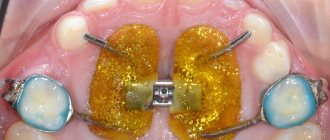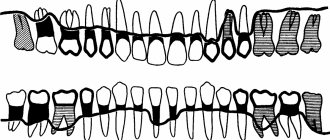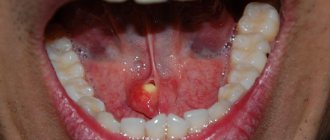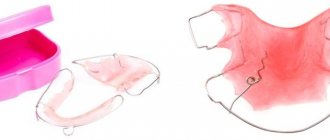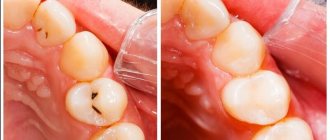The first person to come close to a detailed study of recovery methods after shrapnel wounds with a jaw fracture was dentist Severin Tigerstedt. His developments helped restore the functionality of the jaw apparatus to many people, not only during military operations, but also in peaceful life.
Subsequently, his developments were improved and modernized. Due to their simplicity and low cost, Tigerstedt wire tires are still used today.
Feature of the technique
There are several methods for applying wire ligatures according to Ivey, Geikin and others.
However, immobilization of jaw fragments using splints is considered a more rational method compared to ligature binding, which is only a temporary procedure and is combined with the application of a chin sling. The Tigerstedt fixation method is considered universal, since it is used for almost all jaw bone fractures. For production, aluminum wire with a cross section of up to 2.0 millimeters is used.
The natural softness of aluminum allows structures to be made by hand. It does not require complex instrumentation, so the fixator can be customized for each patient and used in any setting.
This technique was modernized by domestic scientists A.A. Limberg and A.E. Rauer.
How to remove splints after a jaw fracture?
The decision to remove splints from the jaws is made only by the attending physician. To determine whether the damaged bones have recovered, X-rays must be taken. They allow you to accurately assess the patient’s condition and understand whether he still needs fixation structures.
Condition of the oral cavity before removing splints from the jaw after a fracture
Removing splints from the jaw after a fracture is a separate issue that worries patients. The procedure cannot cause any difficulties for an experienced specialist. Typically, patients want to know whether it hurts to remove splints after a jaw fracture. Although people have different pain thresholds, most who have undergone this procedure agree that it does not cause significant discomfort.
Difficulties usually arise later. It takes time to get used to the lack of a support mechanism. In addition, at first the muscles are weakened. Particular attention should be paid to nutrition.
Types of Tigerstedt tires
Practicing dentists use five types of jaw retainers using the Tigerstedt method.
Smooth splint
Used for a fracture of the lower jaw, if 4 teeth are preserved (on a large chip). Splinting with a smooth splint is performed in the following cases:
- when a linear fracture of the lower jaw occurred;
- in order to prevent fracture during cystostomy, cystectomy or resection;
- when cracks occur.
Fastening is done using aluminum wire. It is bent in an arc, engaging the wisdom tooth, after which each dental unit is covered. At the end of the manipulation, the ligatures (distal and medial ends) are twisted. The ends of the cut ligatures are placed in the spaces between the crowns.
This orthopedic product is removed after 5 weeks.
It is important to note that this product cannot be used if the patient has a deep bite with a vertical arch position.
With spacer
A wire splint with a spacer is placed if the crowns in the area of injury are not preserved, and the fracture itself passes along the alveolar part. A special feature of this splint is the location of the spacer at the fracture site.
To prevent displacement, the edges of the bend are placed with emphasis on the adjacent teeth.
With hook loops
Tires with toe loops are produced at an angle of 90 or 45 degrees.
This method allows you to eliminate a fracture of the lower jaw with or without displacement. If the integrity of the upper jaw is compromised, it becomes necessary to wear a sling bandage.
Five or six loops are made on the tire, the length of which is from 3 to 4 mm. They are placed on even-numbered dental units. Rubber tubes are put on the hooks, which are changed every six days. Ligatures are tightened periodically at intervals of 2 days.
With inclined surface
A splint with an inclined surface is used if there is a need to prevent lateral displacement to the fracture site. The supporting inclined plane is provided by vertically installed hinges, which are twice the height of the molars.
With reference plane
An orthopedic product with a retaining (supporting) plane helps prevent sagging tissues and flaps of the hard palate. Therefore, when installing this type of product, there is a positive dynamics of the treatment process in case of traumatic damage to the bones of the upper jaw or after surgical therapy on it.
The voice of military medicine that has survived to the present day
1. Essential anesthesia and limb-sparing treatment. Who doesn’t know the famous surgeon Nikolai Pirogov? Topographic anatomy and operative surgery retain more memories of him than of any other doctor. And numerous anatomical eponyms (lymphatic pharyngeal ring of Pirogov-Waldeyer, Pirogov’s triangle) and operations (amputation of the lower leg at the level of the ankles according to N.I. Pirogov) are excellent confirmation of this. The surgeon and anatomist made his significant contribution to medicine on the battlefield. Yes, in fact, he is the founder of military field surgery as such. Therefore, speaking about his achievements, it is difficult to single out just one. However, its undoubted acquisition for Russian medicine is the first use of ether anesthesia in surgical practice during the Crimean War (1853-1856). Also, all traumatologists remember Pirogov as the doctor who first used a plaster cast to immobilize a fractured limb, thus saving many soldiers from amputation. Moreover, before plaster there were starch dressings, which he used in 1847 in the Caucasus. And even earlier, surgeons used low-strength splints (pieces of bark) for these purposes. In general, we can talk about Pirogov forever, but let’s move on.
2. Dental splint made of soft aluminum wire. The process of treating jaw fractures developed extremely slowly. Maxillofacial surgeons used large, heavy, inconvenient structures to use, which, with everything else, often displaced fragments, which, you understand, did not contribute to a high-quality cure for the sufferers. Until the beginning of the First World War (1914-1918), doctors tried in vain to find an optimal solution to the problem, but they received only a huge number of pseudarthrosis (false arthrosis, not typical for a given place), improper alignment of fragments and unions. The decision came unexpectedly to one of the dentists at the Kyiv military hospital, Severin Tigerstedt. One day, standing by the patient’s chair and trying to match the fragments of the lower jaw, Tigerstedt found a simple and ingenious solution. He took a thin aluminum wire and shaped it to exactly follow the curve of the patient's jaw, then attached it to the outside of the teeth and secured it with several turns of wire on the inside. This is how bent wire dental splints appeared, which have been used for more than 90 years and, moreover, are still the optimal treatment method for fractures of the upper and lower jaws.
Book dedicated to Nikolai Gaisky
3. Antitularemia vaccine. The Second World War became the most difficult test for a huge number of people, including Russians. Wartime was a time when the most dangerous infections literally flourished. And, of course, suppressing outbreaks among both military and ordinary people was the number one goal for many infectious disease doctors. One of these “mow-down” infections was tularemia, which was transmitted through rodents (an unfavorable hygienic environment is extremely favorable for the reproduction of mice and rats). And in the forties of the last century, a man was found who was able to defeat her. Nikolai Gaisky, an Irkutsk scientist with Samara roots, created with his colleague Boris Elbert a live attenuated (artificially weakened) vaccine against tularemia and, thereby, saved thousands of lives, reducing the incidence by 2000 times. And the attenuation method for creating vaccines “lives” in anti-infective practice to this day. In 1946, for outstanding achievements in Soviet microbiology and immunology, Gaisky and Elbert were awarded the title of laureates of the USSR State Prize.
4. Prevention of influenza with oleic acid preparations. It is clear that when a person is sick, he is not able to cope with his work. Especially if she is physically heavier. Especially if the person is a soldier. Therefore, during the Second World War, medicine actively fought not only against deadly infections (plague, tularemia, cholera), but also against the completely ordinary flu. Professor Nikolai Gamaleya, head of the laboratory of the Institute of Epidemiology and Microbiology of the USSR Academy of Medical Sciences, worked in this field, who in 1942 developed an effective method for preventing influenza among army personnel - he proposed lubricating the nasal mucous membranes with oleic acid preparations. This helped, and the incidence of influenza decreased several times, providing the prerequisites for the development of other preventive drugs of similar use.
5. Penicillin by Zinaida Ermolyeva. Vaccines and prevention are, of course, good, but how to effectively treat people when they get sick? The answer is simple - look for a cure. And since many diseases were bacterial in nature, there was an urgent need for antibiotics. Rumors reached Moscow from behind the front that in 1941 the United States launched the industrial production of a certain drug that could effectively and quickly cure patients from severe infections. Of course, it was not possible to obtain a sample, so Soviet doctors put all their efforts into searching for their universal cure. Two years of failures, and finally, a bactericidal mold strain with properties reminiscent of Penicillium Chrysogenum
Alexander Fleming, found.
Penicilium krustozum
strain of Zinaida Ermolyeva, the head of the very laboratory where the research was carried out, turned out to be no less strong than its foreign counterpart. And the antibiotic krustazin, which was launched in 1944 and was first used on the First Baltic Front, helped thousands of hospitalized patients recover. Subsequently, penicillin was synthesized, and the study of antibiotics continued at snowball speed. Nowadays, the sensitivity of bacteria to penicillin has greatly decreased, but the pharmaceutical industry does not stand still, and there is a continuous search for new effective antibacterial drugs.
Andrey Bagdasarov
6. Blood replacement solutions.
As sad as it may be, minor injuries at the front were a fluke and extraordinary luck. Basically, on the battlefield, soldiers bled to death and if they lived to be taken to the hospital, they died from hemorrhagic shock. Of course, methods of blood replacement existed before the Great Patriotic War, but it was during the period from 1941 to 1945 that numerous options for saving lives using infusion therapy appeared. Firstly, doctors compiled several dozen prescriptions for isotonic solutions (similar to blood in ionic composition), for example, saline infusin, Petrov's, Popov's, Filatov's liquid, serotransfusin, Asratyan's anti-shock liquid. Many of them have remained in medicine to this day as various compositions for infusions. It is interesting that bacteria (namely Leuconostoc mesenteroides
) brought great benefit here (instead of the usual harm), because the dextran that they produced, “extracting” glucose from sucrose, interfered in the food industry, but turned out to be an excellent high-molecular blood substitute. Swedish scientists Grendel and Ingelman first came to this idea, but the domestic dextran preparation, polyglucin, was created by Russian scientists at the end of World War II at the Central Institute of Hematology and Blood Transfusion under the leadership of its director Andrei Bagdasarov. Now it and its analogue reopolyglucin are used very widely in surgery.
General rules and basic provisions when applying structures
The application of orthopedic structures, regardless of their type, occurs in compliance with the following rules:
- the manipulation is carried out after the administration of local anesthetics;
- to reduce saliva production, a subcutaneous injection of Atropine is performed;
- the structure begins to bend from the left side;
- the structure bends outside the oral cavity;
- according to medical agreement, the ligature wire is twisted only clockwise.
The main criteria that indicate that the orthopedic design is installed correctly:
- has a location on the neck;
- comes into contact with each tooth (at least at one point);
- repeats the outline of the dentition;
- does not spring;
- despite contact with the gingival papillae, they are not injured.
In recent years, practicing dentists in the treatment of fractures of the lower jaw bones have given preference to surgical methods rather than wire mobilization. This is due to the fact that the recovery process is shortened, and, as a result, the patient’s time in hospital is reduced.
Another advantage of surgical therapy is easier dental care. It is also important that the patient’s nutrition does not cause any particular difficulties.
How long to walk with splints for a broken jaw?
In this matter, any patient would like to hear specific terms. But, unfortunately, no specialist can do this, since each case is individual. The time it takes to recover depends on the severity and nature of the injury. But the quality of treatment is equally important.
Double-jaw splinting for a jaw fracture
However, in most mild cases, patients wear splints for about three or four weeks. It should be noted that during this time the jaw muscles, which are immobile, can atrophy. To avoid complications, you need to resort to massage, and after removing the splints, therapeutic exercises may be required.
Meanwhile, if we are talking about serious fractures, in which splinters and displacements occur, then the period of wearing tires can even increase up to a year. And this period sometimes cannot be reduced even with high-quality treatment and careful care.

